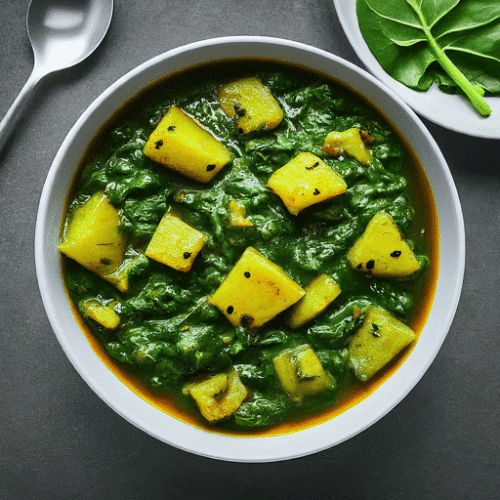Indian cuisine, renowned for its aromatic spices and complex flavors, has long been associated with traditional cooking methods. Clay tandoors, seasoned kadais, and the skilled hands of experienced chefs have been the cornerstones of Indian kitchens for centuries. However, a quiet revolution is taking place in restaurant kitchens across India and beyond. At the heart of this culinary transformation is an unexpected hero: the professional rotisserie. This modern equipment is reshaping how chefs approach Indian cuisine, offering new possibilities while honoring time-honored traditions.

Impact of Professional Rotisseries on Restaurant Kitchens
The Evolution of Indian Restaurant Kitchens
The journey of Indian restaurant kitchens is a fascinating tale of tradition meeting innovation. Historically, these kitchens were bustling spaces filled with the sizzle of ingredients hitting hot surfaces and the aroma of spices. This romantic image persisted for generations, with techniques passed down from master to apprentice.
The mid-20th century marked the first significant shift with the introduction of gas stoves and electric appliances. These innovations brought a degree of consistency and efficiency to Indian kitchens, but the core cooking methods remained largely unchanged. It wasn’t until the late 1990s and early 2000s that rotisseries began making their way into Indian kitchens, heralding a new era of culinary possibilities.
Initially met with skepticism, rotisseries slowly gained acceptance as chefs discovered their potential. The turning point came when renowned restaurants started incorporating rotisserie-cooked dishes into their menus, showcasing how this technology could enhance rather than replace traditional methods.
Key Benefits of Professional Rotisseries in Indian Cuisine
The adoption of rotisseries in Indian kitchens is a response to the numerous benefits these machines offer. Improved consistency in cooking is one of the most significant advantages. Rotisseries ensure even heat distribution, crucial for dishes like whole tandoori chicken or leg of lamb. This consistency enhances food quality and reduces the margin for error, allowing less experienced chefs to produce high-quality dishes reliably.
- The slow, rotating motion of rotisseries allows meats to self-baste, resulting in juicier, more flavorful dishes. This self-basting action is particularly beneficial for Indian cuisine, where marinades play a crucial role in flavor development. As the meat rotates, it continuously bastes itself with its own juices and the marinade, leading to a depth of flavor that’s hard to achieve with static cooking methods.
- Efficiency is another key benefit. Rotisseries can cook multiple items simultaneously, significantly reducing preparation time and energy consumption. This allows chefs to better manage their time and resources, focusing on other aspects of meal preparation while the rotisserie does its work.
- The versatility of rotisseries opens up new possibilities for menu development, allowing chefs to experiment with traditional recipes and create exciting fusion dishes. From kebabs to whole birds, and even certain vegetarian dishes, rotisseries accommodate a wide range of Indian culinary creations.
- While the initial investment in a professional rotisserie might be significant, the long-term savings in labor and energy make them economically viable for many restaurants. The consistency and quality of dishes produced can also lead to increased customer satisfaction and loyalty, further justifying the investment.
Popular Indian Dishes Reimagined with Rotisserie Cooking
Innovative chefs are using rotisseries to breathe new life into classic dishes and create exciting fusion offerings. Rotisserie tandoori chicken achieves the smoky flavor and tender texture of the traditional version, but with more consistent results. The even cooking ensures that the chicken is perfectly cooked throughout, while the continuous rotation allows for a uniformly crispy skin.
Seekh kebabs have also found a new expression through rotisserie cooking. The even heat and constant rotation result in kebabs that are consistently juicy and well-cooked throughout. The self-basting action helps to keep the meat moist, preventing the dryness that can sometimes occur with traditional grilling methods.
But it’s not just meat dishes that benefit from rotisserie cooking. Chefs are experimenting with items like rotisserie spiced pineapple, a modern twist on a classic dessert. The slow rotation caramelizes the sugars in the fruit, creating a complex flavor profile that pairs beautifully with traditional Indian spices.
Even paneer, a staple of vegetarian Indian cuisine, is finding new life on the rotisserie. Rotisserie paneer tikka showcases how this cooking method can benefit non-meat items, creating a dish with a unique texture and flavor profile.
These innovations complement traditional methods, allowing chefs to expand their culinary repertoire while maintaining the essence of Indian cuisine.
Customer Perceptions and Preferences
The introduction of rotisserie-cooked dishes has been met with enthusiasm from diners. Many restaurants now feature visible rotisseries, adding a dynamic, mouth-watering element to the dining experience. The sight of slowly rotating meats, glistening with marinade, creates an anticipation that enhances the overall dining experience.
Customers appreciate the perceived healthiness of rotisserie-cooked foods, as the self-basting action often requires less added oil. This aligns well with modern dietary trends, making rotisserie dishes an attractive option for health-conscious diners without sacrificing flavor.
Consistency is another factor driving customer preference. Diners enjoy knowing that their favorite rotisserie items will taste the same every time they visit, a consistency that can be challenging to achieve with traditional cooking methods.
The novelty of rotisserie cooking in Indian cuisine also plays a role in its popularity, offering a new experience within the familiar framework of Indian flavors.
The integration of professional rotisseries into Indian restaurant kitchens represents a harmonious blend of tradition and innovation. Far from diminishing the authenticity of Indian cuisine, rotisseries are enabling chefs to explore new dimensions of flavor and texture while maintaining the essence of classic dishes.









